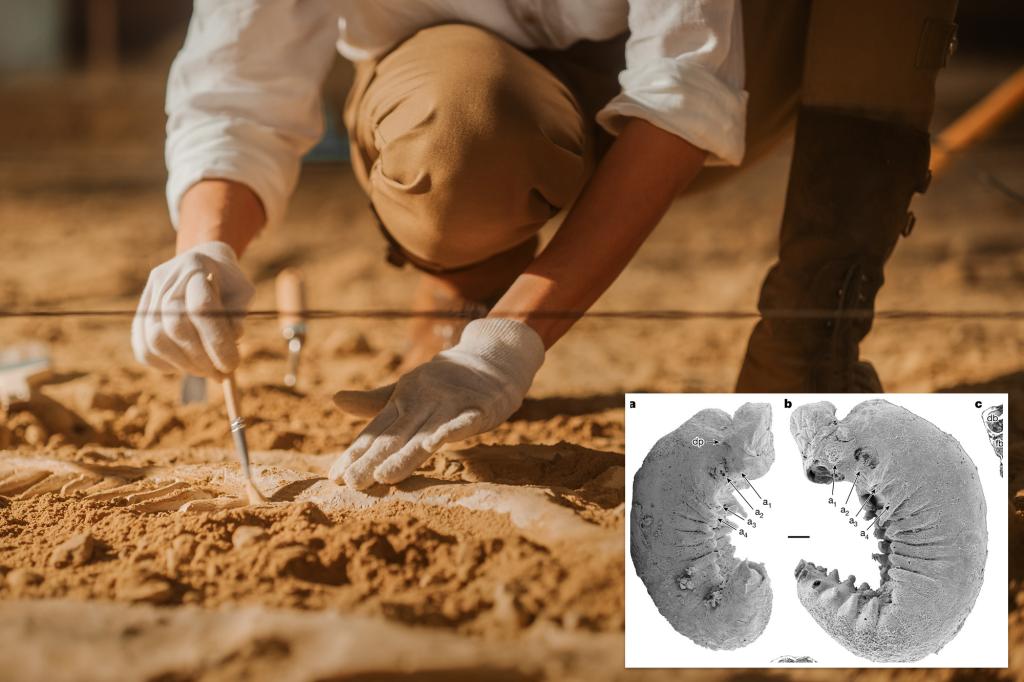The Remarkable Preservation of a 520-Million-Year-Old Larva
The world of paleontology was recently turned on its head with a discovery that sounds more like science fiction than science fact. While most fossils give us little more than stone replicas of ancient bones, researchers have uncovered something truly extraordinary: a 520-million-year-old arthropod larva with its internal soft tissues remarkably preserved. This tiny creature, no bigger than a grain of rice, has offered scientists an unprecedented window into early animal development and evolution, challenging long-held assumptions about the complexity of Earth’s ancient inhabitants. The discovery represents one of the most detailed glimpses into early animal life ever recorded, providing intricate details of internal anatomy that normally disappear within days of an organism’s death.
The exceptional preservation revealed structures that typically vanish without a trace in the fossil record. Using advanced synchrotron X-ray tomography, researchers identified an intact brain, digestive glands, a primitive circulatory system, and even the delicate nerve networks that once controlled the larva’s simple legs and eyes. Katherine Dobson, one of the study’s co-authors, expressed her amazement: “In this incredible tiny larva, natural fossilization has achieved almost perfect preservation.” This level of detail is virtually unheard of for specimens of this age, especially for a soft-bodied larval form. What makes this find particularly significant is that it provides evidence that early arthropods—the group that includes modern insects, spiders, and crustaceans—possessed surprisingly sophisticated internal structures half a billion years ago, far earlier than scientists had previously documented.
For lead researcher Martin Smith, the discovery fulfilled what he described as his ultimate paleontological dream. “When I used to daydream about the one fossil I’d most like to discover, I’d always be thinking of an arthropod larva,” Smith explained, “because developmental data are just so central to understanding their evolution.” The odds against finding such a specimen seemed astronomical—larval forms are incredibly small, delicate, and typically decompose rapidly after death. Their fragile bodies rarely survive the process of fossilization, making this preservation all the more remarkable. Smith admitted his own disbelief, saying, “Larvae are so tiny and fragile, the chances of finding one fossilized are practically zero—or so I thought!” This rare specimen has provided scientists with the developmental data that Smith and other researchers have long sought, offering insights that would be impossible to glean from adult specimens alone.
Perhaps the most exciting aspect of the discovery involves the larva’s brain structure. Researchers identified a protocerebrum, an ancient brain structure that would eventually evolve into the more complex neural systems found in modern arthropods. By examining this primitive brain, scientists can now trace the evolutionary pathway that led to the distinctive head formations that have helped arthropods become one of Earth’s most successful animal groups. This single specimen provides a crucial missing link in understanding how arthropods developed the neurological complexity that allowed them to adapt to virtually every environment on our planet—from the deepest ocean trenches to mountain peaks, from scorching deserts to the frozen Antarctic. The presence of such advanced structures in a creature from the early Cambrian period suggests that complex nervous systems evolved much earlier than previously thought.
The preservation itself represents a scientific miracle. Under normal circumstances, soft tissues begin to decompose almost immediately after death. Within days, the delicate internal structures of small organisms completely disappear, leaving nothing for the fossil record. Smith captured the astonishment felt by the research team when he first examined the specimen: “I already knew that this simple worm-like fossil was something special, but when I saw the amazing structures preserved under its skin, my jaw just dropped—how could these intricate features have avoided decay and still be here to see half a billion years later?” The answer likely involves an extremely rare combination of environmental conditions that halted the decomposition process almost instantly, followed by a perfect balance of minerals that replaced the organic tissues before they could decay. This exceptional preservation process has given scientists a gift that spans more than half a billion years.
This remarkable discovery highlights the incredible value of even the smallest fossils in our understanding of life’s long journey on Earth. While dinosaur bones and mammoth tusks may capture the public imagination, this tiny larva—smaller than a grain of rice—has provided insights that fundamentally change our understanding of arthropod evolution. The sophisticated internal anatomy preserved within this ancient specimen demonstrates that the complex body systems we associate with modern arthropods were already developing in the early Cambrian period, a time when complex life was just beginning to flourish on our planet. As research continues on this extraordinary specimen, it will likely yield even more secrets about how some of Earth’s most successful animals evolved the adaptations that have allowed them to thrive for hundreds of millions of years. This single fossil, against all odds, has bridged an immense gap in our knowledge and connected us more intimately with the ancient past of our living world.


